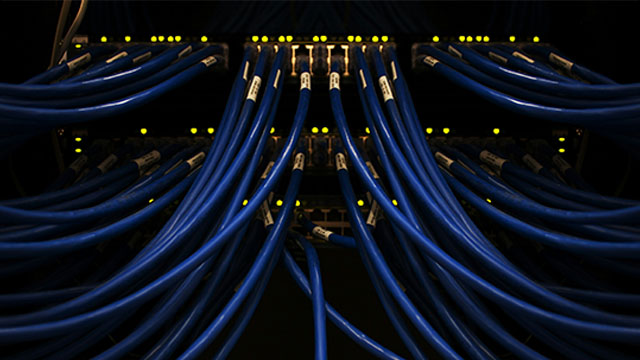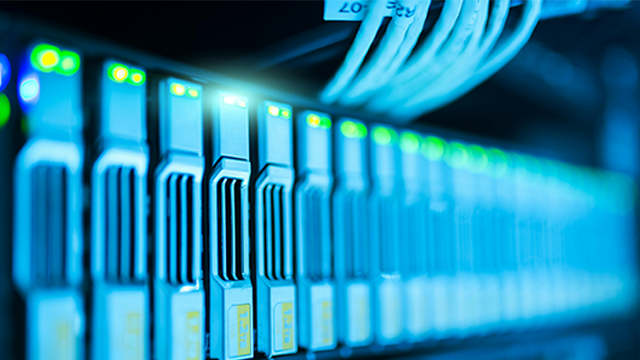Cloud Computing is now considered mainstream, but where many early adopters to Cloud-based services moved all or most of their operations to them, it’s now not uncommon to see organizations move back to a hybrid model of physical data centers and Cloud operations. HCI (Hyperconverged Infrastructure) can offer some great operational benefits in these cases. Here, the Procurri team explains how HCI works and how it can help streamline operations for those requiring more than Cloud alone can give them.
The Definition of Hyperconverged Infrastructure
Hyperconverged Infrastructure (commonly abbreviated to HCI) moves the Cloud operating experience into a cluster or on-prem appliance. Alongside CPU, memory and disk, a 1U or 2U pizza box collates compute, network and storage systems. Then, an operating stack is installed onto the appliance; including Hypervisor/s, management layers and software-defined storage to deliver the full Cloud experience but without having to rely on a third party.
The blocks are most commonly used to replace older and inflexible legacy systems to provide a more modern operating environment. Unlike many older systems, HCI can deliver:
- Rapid infrastructure and applications across the organization
- Streamlined IT acquisition models
- A Cloud experience on-prem, in a hybrid environment
- Enhanced utilization of IT assets.
In most cases, the HCI can interface with a public cloud provider and can work to an agile, flexible and scalable model.
What is HCI Most Commonly Used For?
Of course, as with any IT solution, HCI is by no means a one-size-fits-all. However, there are several instances in which it is most commonly used, and these are as follows:
To Transform Service Reliability
HCI can help transform the functionality of an IT team or department to a more service-based role. With the increased ability to continuously deliver services, redundancy and reliability protocols can be built in for a fraction of the cost of more traditional data center configurations. Stability is added to the business underpinning all IT functions, and any in-house IT team can move to a more value-adding role than simply fire-fighting issues and concerns from around the business.
To Cater for Changing Demands and Developments
Whether seasonally or developing on an ongoing basis, organizations may need their IT requirement to fluctuate or grow in line with business requirements. HCI is scalable extremely easily, and so can be expanded or decreased as needed without great change in configuration or vast financial or resource cost.
To Reduce Hardware Requirement
With so much combined into a single software-defined package, HCI has a lesser hardware requirement than more conventional configurations, but without the need for any reduction in capability. This allows for less physical space in the data center, less power required and less ‘owned’ assets.
To Enhance and Streamline Resource Access
Data processing capabilities can be somewhat unpredictable in legacy systems, and resources consumed quickly without much notice. The increased system reliability that HCI brings allows for resources to be consumed and used in a more predictable and linear manner; bringing less unpredictability and more reliability to the business – using resources fully and completely, but maintaining flexibility.
To Future Proof
It seems as though none of us can keep up with tech developments quickly enough – and while you at home using an iPhone a few models behind may not be much of a big deal, it can be business-critical that organizations move with the times. HCI protects against rapid-scale change and transitions all essential software to a more modern configuration; including ERP (Enterprise Resource Planning) systems.
Why is Hyperconverged Infrastructure Beneficial?
Any change made to data center infrastructure can be a long, costly and resource-heavy process, so businesses must be sure that moving to a hybrid HCI system is the most appropriate choice for them. The following can be considered the main benefits of adopting an HCI system, but should be analysed in line with the business’ needs and the ROI it could produce.
Simplified Data Center Design
HCI offers a flexible alternative to the rigid and set traditional pre-Cloud data center structures, which were reliant upon separate tiers of servers, and silos of storage. What’s more, where IT is required to provision new infrastructure, it can be done almost instantaneously without the need for a major project to be completed.
Single Lifecycle for Hardware and Software
In HCI set-ups, all contained hardware and software is held on a single lifecycle so there’s no disparate EOSL (End of Service Life) dates from OEMs (Original Equipment Manufacturers). This allows for a much easier management of assets on an ongoing basis without the consistent checking in of support needs and planning ahead for them.
Cloud Integration
Commodity hardware stacks (either commercial or Open Source) are used for HCI. This delivers resources in minutes, as opposed to the months it could take with a 3-tier model. What’s more, the organization can build more hybrid Clouds as needed for expansion or scalability. This hybrid model is favoured by many for the ability of split data security – keeping sensitive or business-critical data in-house while continuing to provide Cloud connectivity for other stakeholders.
Easier Scalability
With businesses becoming ever more reliant on data and its processing alongside other forms of tech, it’s not uncommon to see organizations need to scale up rapidly and without much notice. Traditionally, this could be hard to achieve and require a great deal of IT resources to manage. However, with an HCI cluster, systems can be consolidated and grown as needed. This makes HCI ideal for start-ups who are looking to start small and then grow and develop to bigger businesses.
Lower Physical Footprint; Enhanced Sustainability
With HCI allowing for multiple legacy systems to be combined into one, the physical footprint of a HCI set-up is considerably smaller than that of a traditional data center. This allows for the additional space to be used for other operations, the reduction of Opex, a lower hardware maintenance requirement and lower software licensing costs. What’s more, all of this combines to lower the carbon footprint of the data center and enhance the business’ sustainability credentials.
Less Resource Requirement
Older and more traditional data center set-ups require large in-house teams of IT experts to manage the complexities and understand the idiosyncrasies of the systems. HCI holds a considerably smaller requirement as they can be managed solely by tech generalists or outsourced entirely – without the need for specialists in hardware or software.
Better Disaster Recovery and Business Continuity
No matter the configuration of a data center, businesses must be prepared for all eventualities and have solid plans and processes in place for disruptions, disasters and unexpected outages. HCI uses a software-based approach to build resilience that can withstand even a complete site failure, allowing for the most comprehensive and vigorous disaster recovery protocol possible, and the resilience of almost immediate business continuity.
What Happens to Hyperconverged Infrastructure after EOSL?
No matter what set-up your data center has, its components will eventually reach their EOSL date. At this point, the OEM will cease to offer continued support across the hardware and software. Traditionally, at this point, the business would decommission their equipment and replace it with newer models – a cycle that occurred every 3-5 years. This was, and remains, an unwieldy and extremely expensive process, but it is in most cases entirely unnecessary: as the system continues to function and perform past this point.
Instead of undergoing the expensive and wasteful process of replacing components with newer models before they actually need it, Third Party Maintenance can be procured from companies such as Procurri. We offer continued proactive support services across all OEMs and HCI configurations, long past the EOSL date stated. This can extend the lifespan of data center assets up to a full 10 years – with considerable cost savings and sustainability benefits from avoided e-waste processing.
Our services include storage, server and networking maintenance, including:
- 24/7 support 365 days a year
- Proactive monitoring to help identify concerns and issues before they escalate, or even before they occur
- Access to both remote support and on-site specialist Level 3 & 4 engineers and technicians
- A vendor-neutral approach with no favour paid to any one OEM
- Access to the world’s biggest stockholding of IT spare parts – including new and sealed, refurbished and recycled parts
- Access to carbon neutral zero-to-landfill ITAD (IT Asset Disposition) services when hardware finally does reach its end-of-life point.
What’s more, Third Party Maintenance can be up to 70% cheaper than OEM services – so why not give it a try? Get in touch with the Procurri team today to investigate how we can help maintain, update and upgrade your HCI configuration.





